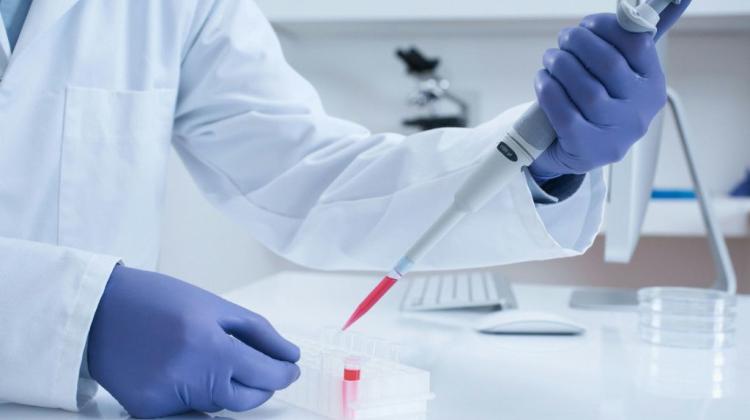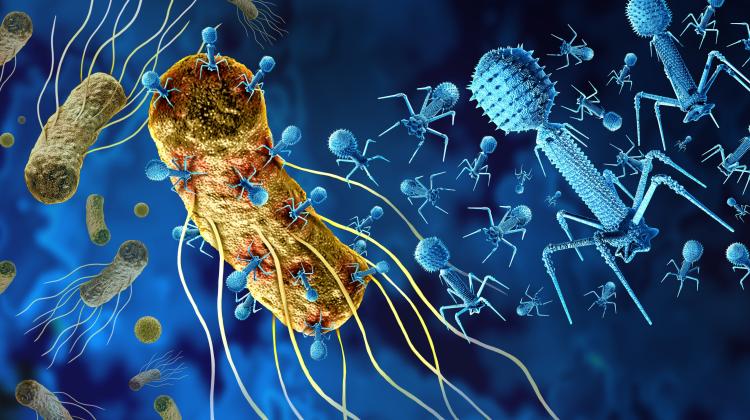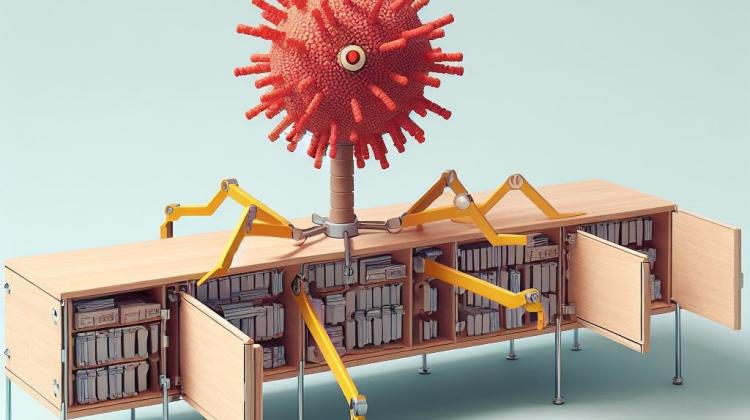Scientists discovered a very fast mechanism that defends mucous membranes against viruses
 Photo: Fotolia
Photo: Fotolia
The fastest vaginal mucosal defence mechanism against viruses known to date has been discovered by scientists from several countries, including Poland. Similar processes could also occur in the mucous membranes of the mouth and airways. Such knowledge opens o possibility to more effectively prevent infections.
"Our research shows that there is a completely new mechanism that belongs to non-specific resistance mechanisms. This is the fastest vaginal mucosal defence mechanism against pathogens known to date" - said in an interview with PAP Dr. Małgorzata Krzyżowska from the Military Institute of Hygiene and Epidemiology in Warsaw, who took part in the work of the international research team. The study, conducted under the supervision of Søren Paludan and Christian Holm, was published in late November in the prestigious journal "Nature Immunology".
"Immune system of all vertebrates have mechanisms to distinguish between its own and foreign cells" - said Małgorzata Krzyżowska. She explained it is the ability to identify viruses, bacteria or foreign antigens to prevent them from threatening the cells of the body. Defence mechanisms against pathogens are many, but not all are known.
Scientists from several countries - Denmark, USA, Belgium, Poland and Sweden - described the previously unknown defence mechanisms that occur in the mucous membranes of the vagina in contact with the herpes virus type 2 (HSV-2). These mechanisms begin to occur already during the first day of the presence of the virus in the mucosa. Until now, with regard to the vaginal mucosa, scientists knew only the defence mechanisms that occur 48 hours after exposure to the pathogen.
"The mechanism that we have studied, starts very early - even before the virus enters the cells of the body" - Dr. Krzyżowska told PAP and added that the herpes virus is recognized at the stage of physical contact, at the mucosal surface. "Epithelial cells already at this point receiver the signal that something foreign is out there and try to call >>troops<< for help" - said Dr. Krzyżowska.
She explained that already on the mucosal surface the body recognizes the surface structure of the virus. This results in secretion of phagocytes that destroy the virus.
"For the body this is the best solution: prevent the virus from penetrating into any cell" - said Krzyżowska. She reminded that, however, that if such a situation occurs, the pathogen attempts to use the cell for its purpose and multiply. "There are many intracellular mechanisms for getting rid of the virus, but they are not one hundred percent effective" - noted the scientist.
The researchers carefully examined the way in which the body recognizes the outer structure of the virus and launches the subsequent series of actions. "We can think about creating compounds that will mimic the external structure of the virus and cause rapid response of the body. This way we know which way to go when searching for a drug" - Dr. Krzyżowska spoke about the potential applications of the research results.
"Many research groups knew that defence mechanisms in the mucous membranes of the vagina activate even before the expiry of 48 hours, which was inconsistent with the theory. One day, these scientists met. It turned out that everyone sees the same thing, and that should be explained" - said the researcher. It turned out that a new, previously undescribed mechanism was responsible.
"My task was to study how inflammation in genital herpes infections facilitate the contraction of HIV. I was supposed to very precisely examine what happened in mucosa. I clearly saw that defence cells appeared earlier than at 48 hours. I was among the few people who noticed this effect" - said the researcher.
Now scientists want to investigate whether similar defensive mechanisms are also active in the case of bacteria and other pathogens, and whether they can be observed in other parts of the body on the mucosa. "If it turns out that the mechanism that we have studied also works in the upper respiratory tract, that would be great!" - hopes Dr. Krzyżowska.
PAP - Science and Scholarship in Poland, Ludwika Tomala
lt/ agt/ zan/
tr. RL
Przed dodaniem komentarza prosimy o zapoznanie z Regulaminem forum serwisu Nauka w Polsce.


















